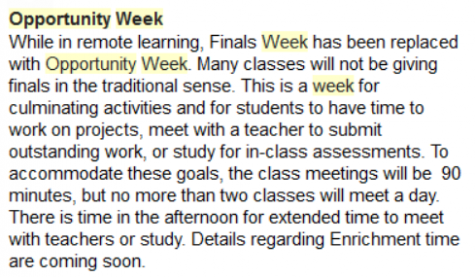Editorial: Students and staff persevere through first full remote semester
Graphic illustration by Sharlene Chen and Elliu Huang
Throughout their first full semester of remote learning, students, teachers and administrators worked through many obstacles.
February 3, 2021
No one expected the first fully remote semester to be easy. Teachers, students and administrators all faced unique and unexpected hurdles, from daily Wi-Fi struggles to communication impediments. But despite all the forces working against them, Vikings faced the challenges with grace, showing empathy toward one another every step of the way. While there is still room for improvement moving into second semester, it is important to acknowledge the unvarying effort that every student and member of staff put in to make first semester a success.
During the transition to remote learning, FUHSD reduced the number of platforms teachers use to communicate with students. In previous years, teachers posted homework and assignments on at least four learning management platforms. Now, most teachers use a combination of Schoology and Google Classroom for submitting homework and completing classroom tasks. This drastic reduction lowered student stress about forgetting to check for work to submit.
Although having a unified platform for checking homework, assignments, grades and tests is helpful, some teachers and students have reported problems with Schoology’s user interface, which can be frustrating, even with half a year of experience.
“A lot of times it wouldn’t let me submit the assignments,” sophomore Sanved Doshi said. “Sometimes when I submit the assignment, it would submit two copies, which can be confusing for teachers.”
Getting used to the new interface and using the gradebook was a challenge for teachers as well. Teachers have trouble seeing the status of assignments, graded or ungraded and published or unpublished. It can also be very time consuming to enter grades if all the grades are different.
“The Schoolloop gradebook was a much better gradebook,” English Department lead Robert Richmond said. “Even the primitive Infinite Campus gradebook that I used is a better grade book. It’s not just a matter of being familiar with [the interface]. There are a few nice little things that Schoology does, but many of the functions that Schoology fills, it doesn’t fill as well.”
The massive effort by teachers and students to adjust to Schoology should be commended. Most teachers and students became accustomed to the system with practice and successfully worked with the system most of the time, turning in and grading work.
When there were many issues, students and teachers often communicated with each other smoothly. In some classes, teachers allowed students to email them a PDF of their work if Schoology shut down or there were Wi-Fi issues. This type of student-teacher cooperation allowed for a healthy and considerate learning environment that should be maintained for the rest of the year.
One way teachers supported students during remote learning was through office hours. Implemented as a substitute for tutorials, office hours helped teachers and students connect with each other beyond a virtual profile picture or silent face. A huge downside of remote learning is the loss of personal student-teacher interactions, such as asking questions or getting help on other activities related to the subject.
“On top of general questions and make up work during office hours, I am assisting a student on a research-based history project,” history teacher Kyle Howden said.
Many students prefer that teachers hold Zoom office hours because it helps students and teachers to get to know each other and allows for better communication. However, despite teachers’ efforts to help students, some teachers find themselves being active the entire office hour period only to have very few students visit them.
“I averaged one student per office hour,” Spanish teacher Kim Revilla said. “I would like to see more students take advantage of office hours.”
Many teachers have been trying their best to provide students with the same chances to ask questions, so students should reciprocate this effort.
Technological issues and other personal problems also contributed to the difficult learning environment, and many teachers remained understanding. During the recent power outage from strong winds, many students dropped in and out of class due to internet issues. Throughout the semester, many teachers were flexible with due dates and submissions of assignments when students dropped out due to Wi-Fi issues, and they were allowed to finish synchronous work asynchronously. Moving forward, teachers who have not been as lenient should work toward being more understanding of students’ situations.
After noticing that students felt overwhelmed with the assignments and tests in the remote classroom, many teachers made changes to their curriculum.
“We found out that students were getting bombarded,” said Howden. “I didn’t realize how much work was being placed into the asynchronous time that traditionally would not have been there.”
Students agree that the reduced work helped them cope with stress during remote learning.
“My teachers would send out surveys asking us how long the homework would take and how we feel about the homework,” junior Arianna Huang said. “I’m very grateful that they care about how we feel about the workload they give us.”
Toward the end of the semester in November, the school unveiled Opportunity Week, a substitute for the typically stressful Finals Week students experienced in person. Administrators portrayed Opportunity Week as a relaxed and easy week with ample time to meet with teachers during Enrichment time.
“I think it’s good that students who were struggling during the semester had an opportunity to work things out with their teacher,” said Revilla.
While discouraging teachers from having tests during Opportunity Week was much appreciated, the reality was very different from what administrators wrote in the email introducing the new format.

Some teachers gave a typical final exam; some gave a project; some gave a cumulative exam the week before; and some gave nothing at all. It is unrealistic to ask teachers to not give tests since curriculum varies greatly among subjects, and some teachers have already planned out the entire semester. School administration needs to clearly distinguish between what they hope the experience of the week should be and what may happen during the week.
Staff and students worked through the many problems in first semester to make remote learning manageable. While Schoology had its problems, a unified platform that most students only needed to check for homework and assignments helped reduce student stress. Many teachers were understanding of the various problems posed by remote learning and were lenient concerning time and workload. Administrators had the right idea in mind for Opportunity Week, but what actually happened varied between teachers based on plans and expectations. As second semester progresses, students, teachers and administrators should work together to improve communication with each other while we continue to navigate remote learning together.
The Epic staff voted 36-0 in favor of this stance, with 2 staff members abstaining.




























































Mohong • Feb 3, 2021 at 9:08 am
Very cool